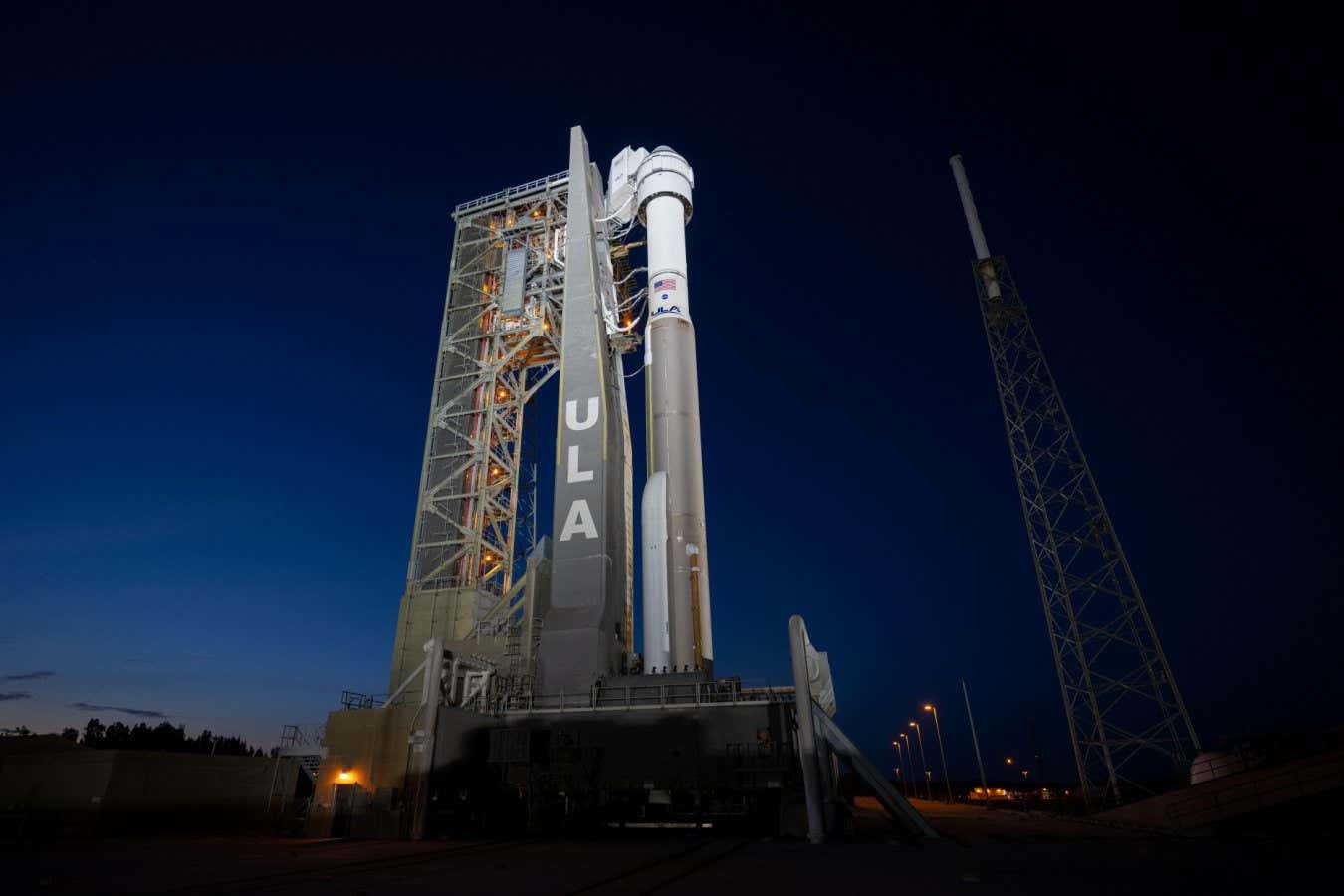Boeing’s Starliner capsule had a helium leak in one of its thrusters, but it is still scheduled to launch on 1 June for its first crewed flight to the International Space Station
By Leah Crane
30 May 2024
The Boeing CST-100 Starliner spacecraft at the Kennedy Space Center in Florida
Joel Kowsky/NASA Photo/Alamy Live News
Boeing is preparing its Starliner spacecraft for its first crewed flight. The capsule has been in the works for more than a decade, and this historic flight will help launch a new era for the US space industry.
When is Starliner taking off?
Starliner is scheduled to launch on 1 June at 17.25 BST, or 12.25pm local time at Cape Canaveral in Florida. The capsule will ride atop an Atlas V rocket, which has never flown in a crewed mission before.
This mission was scheduled to take off in May, but a faulty valve in the rocket caused a delay. The valve was replaced, but technicians found a helium leak in one of Starliner’s thrusters. Ultimately, NASA decided the leak was not a problem and set a new launch date. “We could handle this particular leak if that leak rate were to grow even up to 100 times,” NASA’s Steve Stich said during a briefing on 24 May.
Advertisement
Read more
Is the universe conscious? It seems impossible until you do the maths
How can I watch the Starliner launch?
NASA will be live-streaming the launch on its website as well as its YouTube channel. The webcast will begin about 4 hours before liftoff. The agency also plans to broadcast Starliner docking with the International Space Station (ISS) on 2 June.
What is Starliner’s mission?
Because this is Starliner’s first crewed test flight, the goal is simply to get its two passengers to the ISS and back safely. The two astronauts aboard this flight are Butch Wilmore and Sunita Williams, each of whom has already been to the ISS twice. The plan is for them to stay aboard the ISS for about a week before returning to Earth. Over the course of the mission, the astronauts and their spacecraft technicians on Earth will test Starliner’s hardware and software to ensure that it will be safe for future missions.
